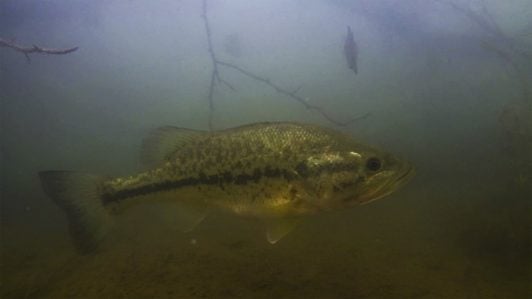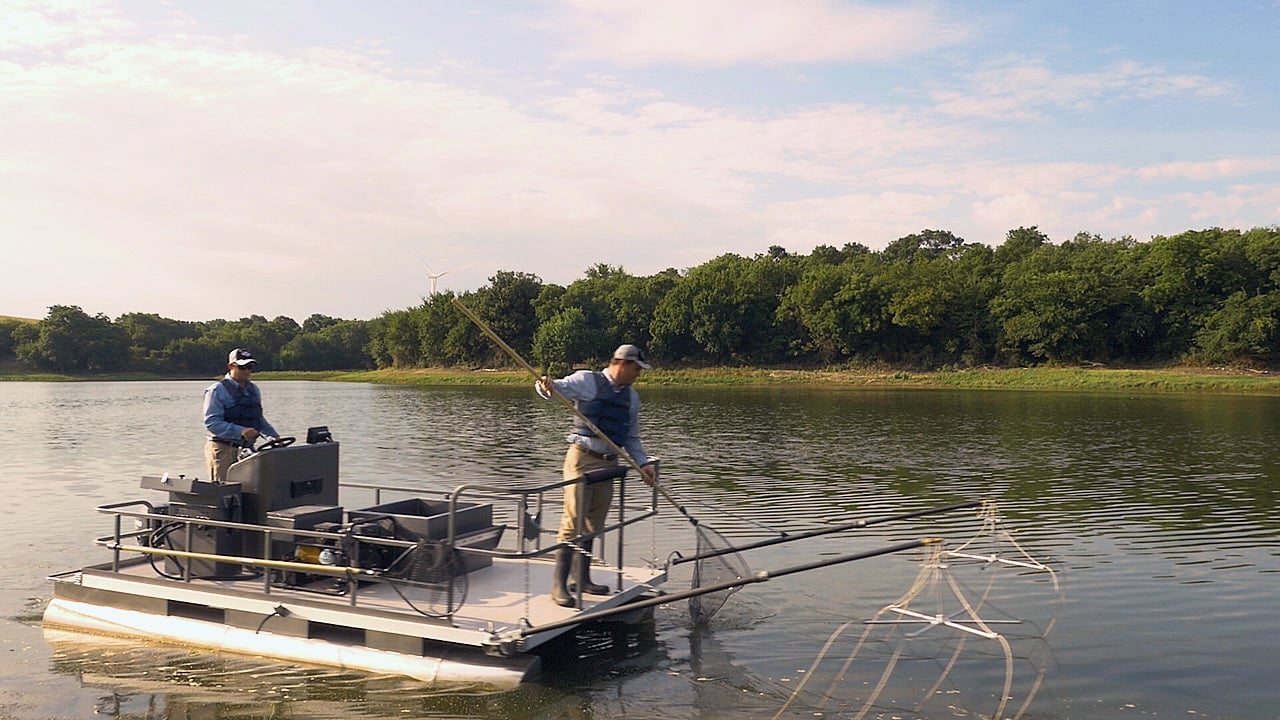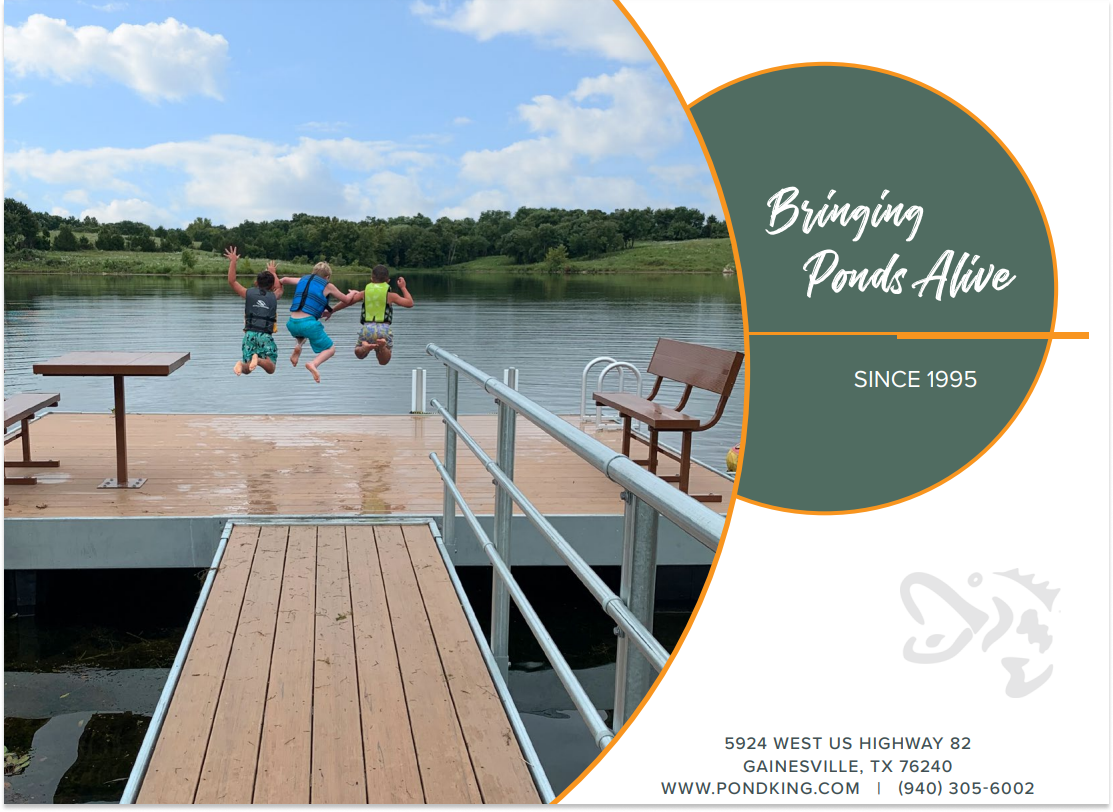The goal of catching a 10-pound bass has long been the dream of many anglers. Having a pond on your own property with this capability would be even more amazing. You can do it, but it will take some work on your part—and a little patience.
Here are six steps to help you turn your private lake into a big Bass fishery.
1. Genetics
Native largemouth bass can reach sizes of 6-8 pounds and occasionally larger. That is a fine size bass, but if you're looking for a trophy-class big bass, stocking fish that have the ideal genetics to grow to a larger size may be the right option for your management plan. To increase the catch weight of your bass populations, consider stocking Florida-strain largemouth bass to increase your potential for producing the monster bass of a lifetime.
The Florida-strain Bass has become increasingly popular, especially in the southern portion of North America, where warmer water temperatures extend the growing season. Pond King carries F1 Bass and pure-strain Florida bass. F1 Bass is the first-generation offspring of a cross between northern largemouth bass and pure strain Florida bass. F1 Bass are more tolerant of colder temperatures than pure Florida bass but maintain the characteristic body profile of the chunky Florida bass. F1 strain an ideal species to stock if your pond or lake gets a few days of ice cover each winter.
2. Habitat
Habitat is an often overlooked management aspect key to growing trophy bass. The prospect of getting your lures tangled up on that downed tree shouldn't be your reasoning for eliminating this critical management component. To create the optimal environment for growing big Bass, we recommend providing 10-15% of total surface acreage with some form of habitat.
Bass hold tight to cover, as they prefer to ambush their prey. This ambush strategy keeps them from having to chase prey very far, allowing the fish to conserve energy and gain weight more quickly. Habitat also provides cover for smaller forage fish, like Bluegill, which helps the forage population grow and develop, increasing prey density—a must-have for any serious trophy-bass fishery manager.
The more diverse the habitat, the better off you will be during seasonal changes. You can achieve the 10-15% coverage goal using natural or artificial habitat. Natural habitat includes hardwoods, cedars, and rock piles. And we offer a wide variety of artificial structures to provide cover throughout the entire water column. Our structure won't deteriorate over time, and the chance of getting your lure hung up is unlikely because of the flexible limbs. For more information on our Honey Hole line of products, view our artificial fish habitats.
3. Feeding Program
Bluegill is the primary forage fish for Bass. Remember that it takes approximately 10 lbs of forage to add 1 lb on a Bass—give or take based on environmental factors. Having a large enough broodstock of Bluegill that spawn to replenish forage stocks is vital to the long-term success of the lake and your trophy bass fishery.

Broodstock fish are too large for most predatory fish to consume, thus allowing an increased number of individuals to spawn successfully. The result is more prey per surface acre. a feeding program will help supplement the diet of Bluegill to produce a more robust class of broodstock.
Bass will not typically utilize pelleted feed directly, but they will reap the benefits of a larger population of bluegill. You can also consider stocking feed-trained bass, but that is an entirely different can of worms.
4. Supplemental Stockings
Variety is the spice of life. While Bluegill are generally the primary food source for Bass in most fisheries, they shouldn't be the only food source if you are looking to grow big Bass. Supplemental stocking of forage fish is necessary to increase prey diversity and density—remember: the goal is fat, lazy Bass that don't have to chase after prey. Stocking supplemental forage increases the amount of game available for consumption within the system.
Different types of supplemental stocking species to consider adding include Golden Shiners, Threadfin Shad, Crawfish, Gizzard Shad, Mozambique Tilapia, and Rainbow Trout—to name a few. Tilapia also benefit your fishery in that they will help control any filamentous algae problems your lake may have. Rainbow Trout are high in protein content and represent substantial meals for hungry Bass looking to put on weight.

Supplemental fish stocking typically occurs seasonally, so contact a Pond King representative about pricing and availability to determine which fish stocking plan would work best in your environment and at what time of the year.
5. Selective Harvest
Total catch and release fishing is a common and disastrous mentality that has somehow proliferated among pond owners. The basic premise is that releasing a bass will result in a larger fish at a later date. There is some truth to this, but it fails to take into account reproduction.
Each season more and more mouths are added to the predatory population. There is only so much space and so many forage opportunities to go around. So, you should harvest Bass to keep your intra-species (among Bass) competition to a minimum. Harvesting out the mid-range Bass reduces competition and helps keep forage species abundant. You can learn more about selective harvest in this blog post.

Consider having our biologist conduct an electroshocking survey to determine the overall fish population to help you make informed decisions regarding setting harvest limits instead of playing the guessing game.
6. Water Quality/Fertilization
Regular water sampling and reporting can help avoid potential harm to your fishery. Assessing both pH and alkalinity may help you to be able to determine any environmental deficits that could constrain growth. Water clarity is another crucial component to consider for optimizing feeding activity among Bass. The murkier the water, the harder it is for Bass to feed. On the flip side, if the water is too clear, prey can see the Bass coming from a greater distance, resulting in more significant energy expenditure for each successful capture of prey. Ideal water clarity is between two to three feet. Have turbidity issues? Gypsum is a popular option to help clear a pond with suspended particles.
Fertilization is another technique to use with a clear pond. Fertilization will allow your lake to produce up to four times as many pounds of fish per acre by increasing the amount of zooplankton and other primary consumers that form the base of the food chain within a lake ecosystem. Of all management practices, lake fertilization has the most direct and indirect benefits to your fishery.

Creating a trophy bass fishery won't happen by simply stocking a few fish and then coming back in a year looking to catch some big bass. First, you need to create the right environment for the fish to thrive. Then, you should monitor the progress from season to season, adjusting as needed along the way.
Pond King biologists can help develop a lake maintenance plan that is right for you and manage the process, allowing you more time on the water fishing for that trophy bass you've always dreamt of catching.
If you live outside our regular service area but you're trying to raise trophy-class Bass, consider checking out our DIY Pond Management App.
Until next time, we'll see y’all down at the pond.





